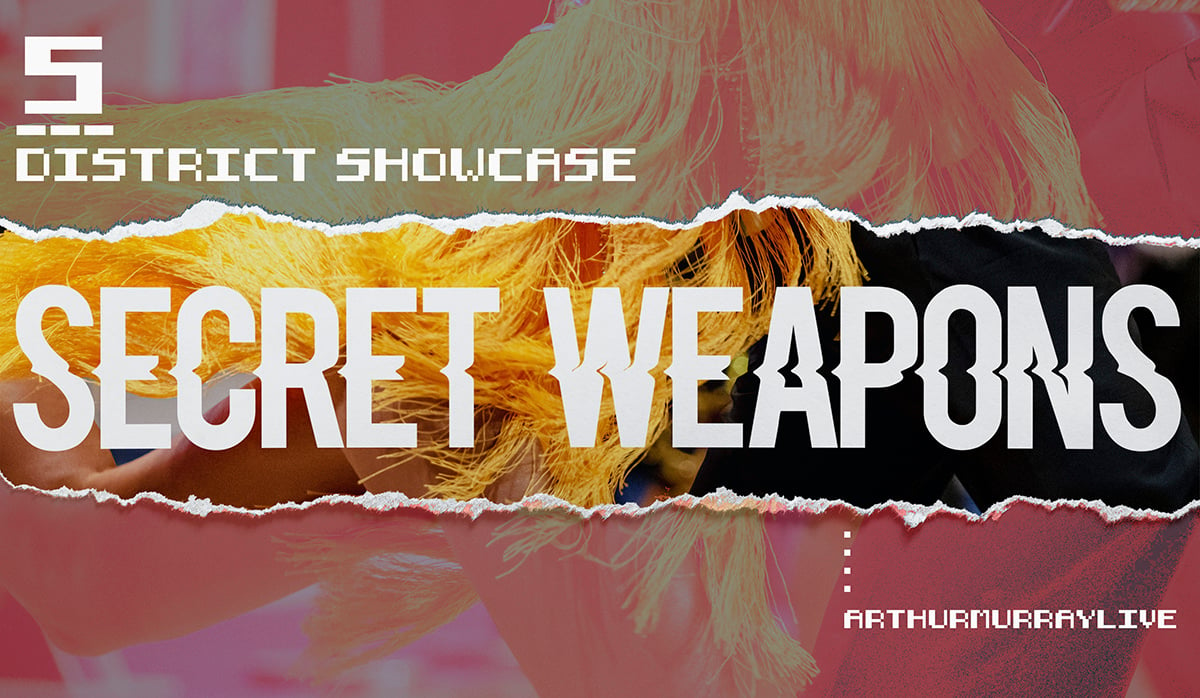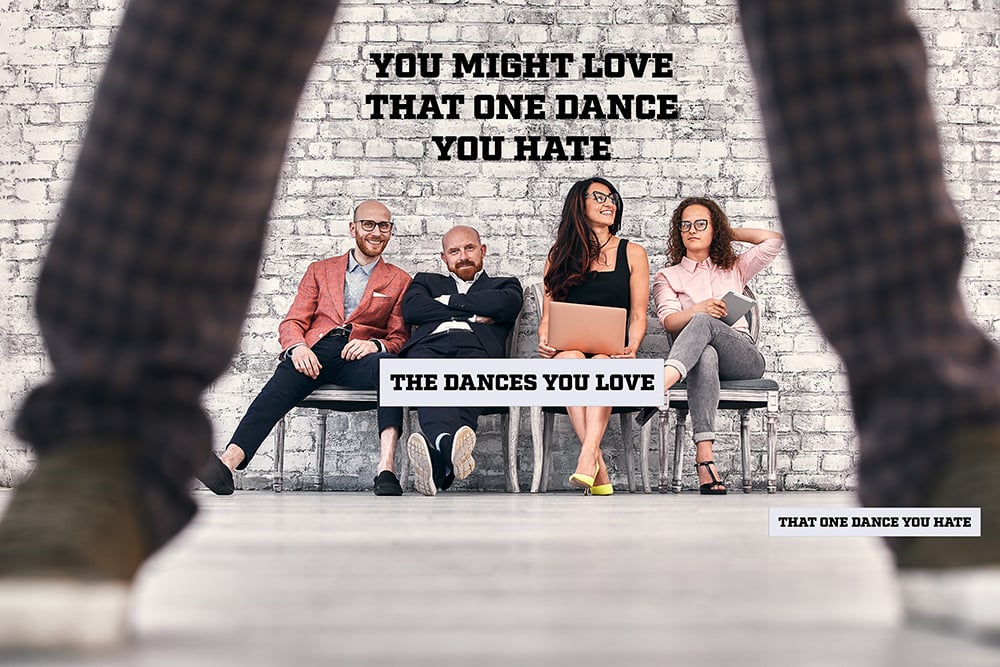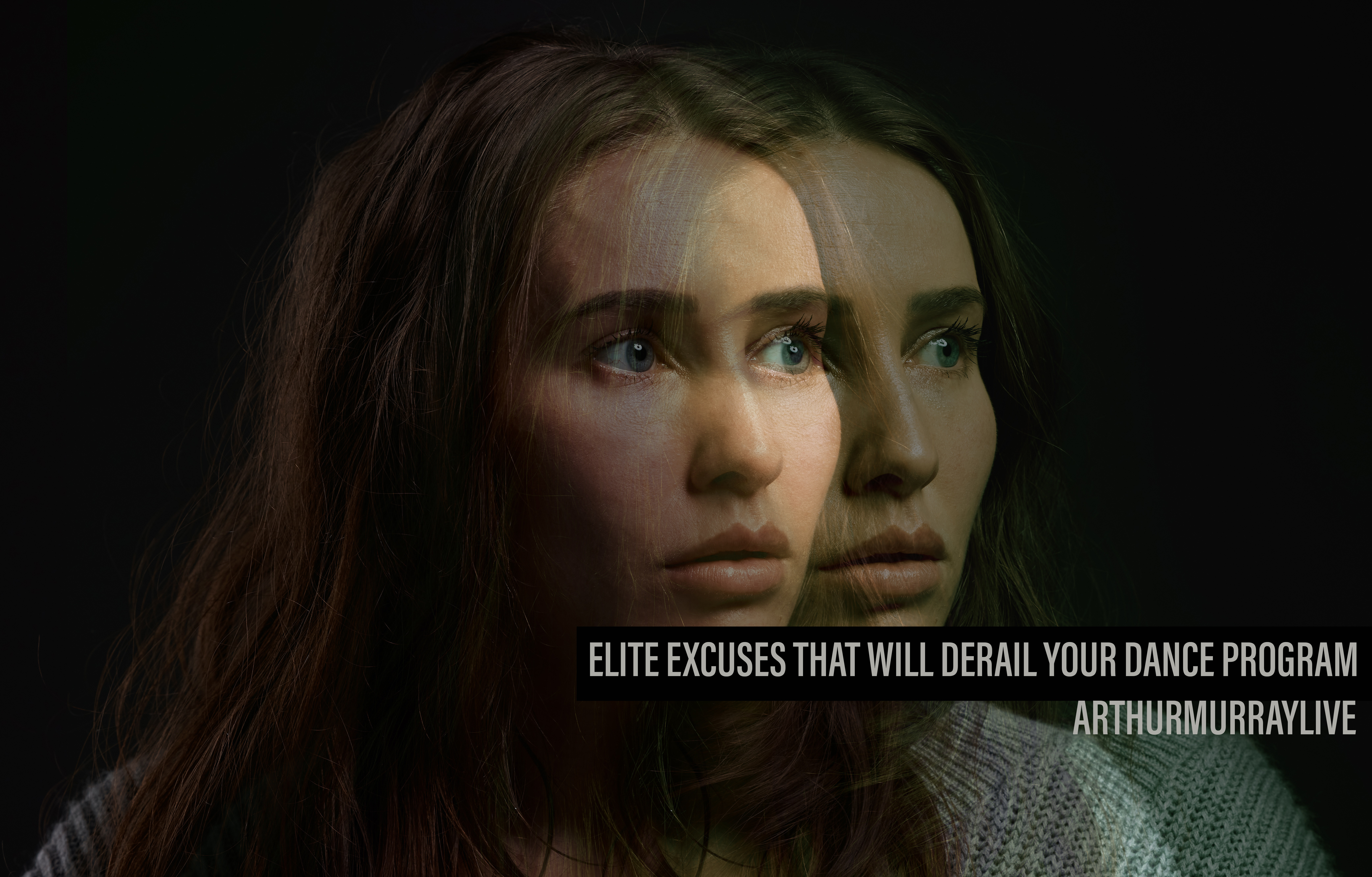5 Secrets of Showcase Feedback
With all the preparation, dance training, hair and makeup that might go into a District Showcase, it's this post-event appointment that can ensure lasting improvement.
The critique.
Call it a mini-coaching, a consultation, or feedback session. The purpose is to take the dancer you were at the Showcase and shape the path to make sure you're better because of it. Here are 5 Secrets to your Showcase Feedback meant to decode the trickiest information and calibrate your strategy with your teacher.

1. The Defrost - How long did it take?
Your freestyle results will usually match your level of comfort and confidence. It's normal for anyone with a heartbeat and dance shoes on to feel a little nervous through the beginning stages of Showcase. That nervous stage eventually melts away - that's why we'll call it "the defrost".
Your first Showcase Feedback Secret is to track the defrost and pinpoint the point where your results started to improve. For some, this might be 5 freestyles, for others, it might be 25.
The better you can track this path to improvement, the easier it will be to improve your strategy for the next Showcase.
2. The Trends - Stockpiling vs. Distributing
If your freestyle results include specific dance feedback like dance frame, footwork, or timing; your goal is to find any trends and break them into two categories: Stockpiling or distributing.
Stockpiling is any consistent trend. Maybe it's posture across your smooth dances, or it's dance frame across your rhythm - or timing everywhere. When improvement is stockpiled in a particular area across a variety of dances, it makes for an easy theme for your upcoming lessons.
Distributing is inconsistent feedback. It's specific to that particular dance but doesn't carry over into other freestyles. So if could be footwork in Foxtrot, timing in Waltz, and posture in Tango.
This type of feedback could be a result of your defrosting period. If the same issue isn't brought up in your other freestyles in that dance, then it could be a temporary setback, but not a consistent problem.
3. What Isn't Mentioned is worth Mentioning
When we get a critique, it's easy to get tunnel vision a focus exclusively on the areas that need improvement. The next Showcase Secret is to consider what was left out of the critique.
For example, if your Waltz had comments about developing your dance frame and arm styling, this is great news. You see, things like timing, footwork, and posture are all objective layers that would be pointed out if they were lacking for your level. If the only note of improvement had to do with your upper body, and adding some style, then you can safely surmise that your timing was consistent, your posture was good, and you were using the correct footwork.
Keep in mind, the judges don't have a lot of time to include every detail. This is why what isn't mentioned is always worth mentioning.
4. Find the Fill Spots
You may see a temporary dip in scored freestyle results. If it looks like a mini version of the Defrost (#1), then you're on the right track.
There's typically another cooling off period anytime you have a substantial break in your Showcase day. This doesn't mean you should avoid breaks altogether, but you can definitely minimize your cooling off periods by maximizing your strategy for the next showcase.
For example, if you were only dancing in the Smooth and Rhythm categories, you would run into some long breaks because of the Country Western, Specialty dance, or International categories. Picking some dances and participating in a few of those divisions will cut those long breaks in half, or more, and keep you from needing to defrost later.
5. Work One Hemisphere at a Time
By now we know that there's a huge value to your post-showcase critique. But every now and then, we can have all the right information, but feel a little overwhelmed with where or how to begin working on it.
This is where the "one hemisphere at a time" approach fits like a tailor made dance costume.
The strategy is to compile all of your upper hemisphere feedback, or lower, into a theme for your upcoming lessons. This doesn't have to derail any current plans for routines or new levels, but committing to 15 minutes a lesson to work on a specific hemisphere is a way to guarantee your dancing and feedback will improve by the next showcase.
Final Thought
There's a version of your showcase story that doesn't include a critique. A "trust my gut", "just live in the moment", approach that, unfortunately, trades temporary comfort for long term growth.
Just like a routine visit to the dentist, we can assume the worst, and then, adding to the problem, choose the worst possible strategy - skipping the appointment. What results is a self fulfilling prophecy, and a dental appointment nightmare.
Setting your comfort zone aside, you'll find your critique experience is as much about validating your progress as it will be about areas of improvement. Not to mention, it is meant to translate a clear plan to you and your teacher.
So jump into your critique. Do it with the same effort and energy that you did when you signed up for the showcase. And if you do, the progress you'll make will be no secret.















